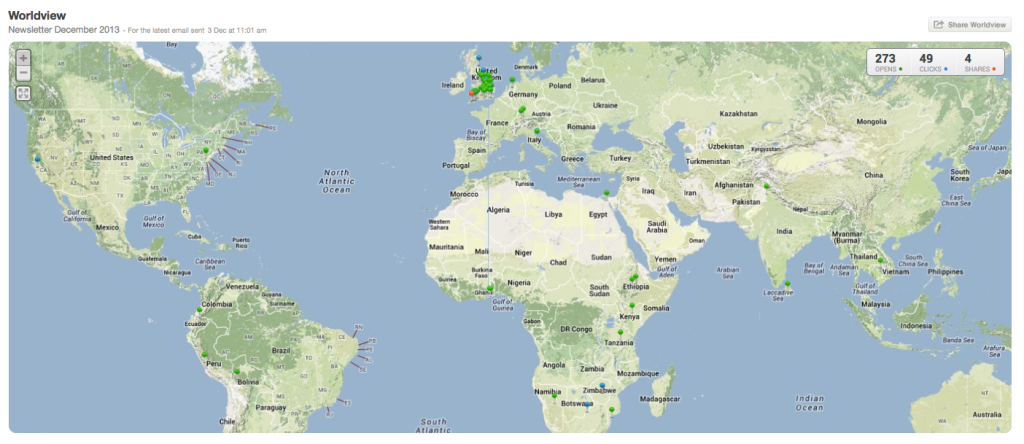When I was initially tasked with writing the Winter Newsletter 2013 for CommsConsult, it seemed like a daunting project, how do you refine all of the numerous activities and projects that the company has achieved in the past six months? However, with the help of members of the team and the use of Campaign Monitor, the newsletter came together surprisingly quickly and smoothly. I found that even when it’s your first time creating a newsletter, it is very easy to create a professional looking and absorbing email campaign using low-cost tools available on the web.
An effective newsletter not only keeps your audience up to date on your company activity but it can be a great way to build a relationship with your audience and show them your brand personality. It is a useful tool to tailor information to particular groups of people, as there is complete control over the newsletter content and the recipients. During this process, I put together a list of the ‘five golden rules’ I believe it is important to bear in mind when constructing a newsletter.
-
Plan ahead. Set the date you wish to schedule the newsletter send-out well in advance and let everyone know who is involved. That way if you are depending on people for ideas or for submissions, they will have plenty of time to get back to you and you shouldn’t have to spend your time chasing people up!
-
Why are you writing a newsletter? Work out who your audience is and what they want to read, what would you like them to think after having read your newsletter? How would you like them to feel towards your company? Importantly, what action would you like them to take? Is the aim to encourage people to contact you or simply look at the company website? It is important to work out how often you plan to send out a newsletter, and to get the right balance between inundating your audience with information and allowing them to forget about you from lack of engagement.
- Get to know the programme you are using. We use Campaign Monitor here at CommsConsult, it is a very intuitive and user friendly method of creating a newsletter. It creates a professional looking page, thanks to the numerous templates that you can choose from, and is simple enough for anyone to be able to use, even if this is your first newsletter. Play around with the different features and options such as colour schemes, images and links.
-
Think about what you like to read in a newsletter. Keep your audience entertained by including different sections that will appeal to a variety of readers. In our case this meant links to practical academic information, informal opinion based blog posts and a blogroll of interesting articles we have come across to name a few.
-
Include links and images. It’s a good idea to add an image with every article, as it draws attention to the post and makes people more likely to click on the link. Let your audience know how to contact you by adding in links to your social media accounts and directly to your website.
Once your campaign goes live it is important to share, share, share. Those that have subscribed to your updates will get the newsletter straight to their inbox, but by sharing your campaign through your social media platforms and on your website, you will ensure that anyone interested in your work will be able to see what you’ve been up to.
Monitoring how far your newsletter travels:
After the newsletter has gone live, and you’ve posted it across Twitter, Facebook, Google+, LinkedIn and all your other platforms, you can sit back and watch the results come in. The importance of monitoring the results of your communication should not be underrated. Monitoring and evaluating the impact of your campaign becomes a vital tool to ensure that you are going in the right direction with newsletter writing. With Campaign Monitor it couldn’t be easier to keep an eye on the statistics. You can watch the numbers of newsletter opens in real time and even see who shares your campaign (and who unsubscribes!). There is also a world map on which you can see where in the world your newsletter is achieving results, and perhaps most useful of all, it is possible to see which links in the newsletter were clicked on and therefore which of your outputs are of most interesting to your audience.
Tracking the social media engagement on the day the newsletter is sent out is another simple way of evaluating your results. Effective monitoring of the newsletters results is not only a rewarding way to help you evaluate the impact of your efforts but also a good method of improving your newsletter communication for next time by creating more engagement. I’m ready to get going with the next edition.
See the CommsConsult Winter 2013 Newsletter view our newsletter archive for previous editions.
This blog was written by Isabelle Howells, who has just completed a four month internship with CommsConsult Ltd. upon graduating with a BA (Hons) in Public Relations from Falmouth University.



Leave a Reply